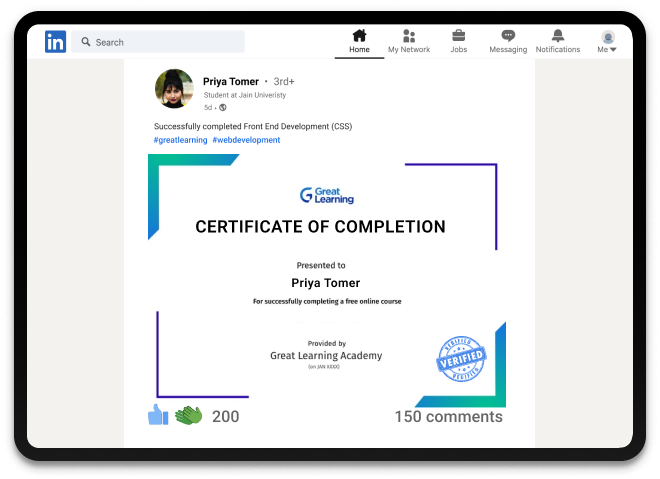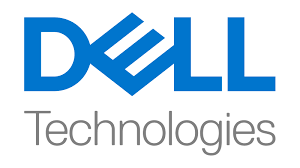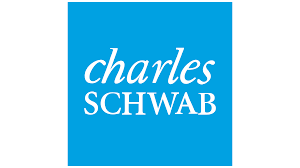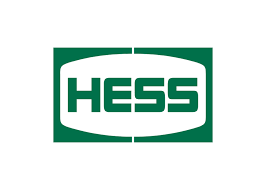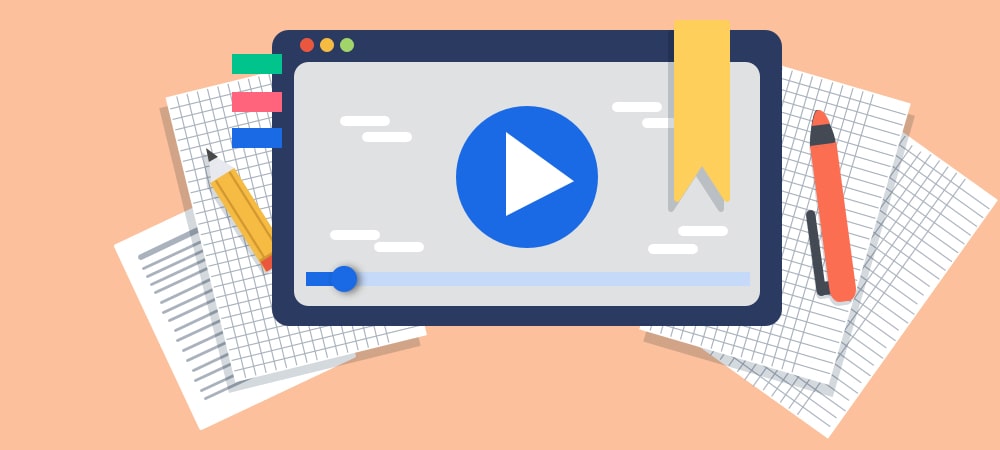Python Projects
Get hands-on experience on Apache Hive to work with innovative Python project ideas. Gain a solid hold on Machine Learning by practicing with beginner-level Python projects by enrolling in this free online course.
What you learn in Python Projects ?
About this Free Certificate Course
The Python Projects for Beginners course is designed to engage you with different python project ideas to work with machine learning. The course introduces you to the Apache Hive tool and gives you a thorough understanding of working with it for various ML tasks. It also comprehends working demonstrations of analysis on football data and cab fare prediction. It also includes learning materials on the subject for your better understanding. You can badge your skills in the domain with the certificate after completing the course.
After you have completed this self-paced intermediate-level guide to Python Projects, you can continue your learning journey in this leading domain by registering for the Machine Learning course with millions of aspirants across the globe!
Course Outline
Hive is a data warehouse used to support interaction between the user and HDFS. This course will give you a demonstration using sample problem statements for your better understanding.
This comprehensive module on Organizational Behaviour, covers the concept, importance, elements, levels, types, and objectives of the field. It provides a deep understanding of the subject to enhance interpersonal and communication skills and create a positive work environment.
With this course, you get
Free lifetime access
Learn anytime, anywhere
Completion Certificate
Stand out to your professional network
1.5 Hours
of self-paced video lectures
Frequently Asked Questions
What are the prerequisites to learning this Python Projects for beginners course?
This is an intermediate-level course. So you will need to have a good understanding of working in Python programming language. If you are not proficient, you can begin with a free Python Fundamentals course before starting with Python Projects.
How long does it take to complete this free Python Projects for beginners course?
The Python for Artificial Intelligence free certificate course is a 7.5-hours long course. You can learn it at your convenience since the course is self-paced.
Will I have lifetime access to this free course?
Yes. Once you enroll in this free Python Projects for Beginners course, you will have lifetime access to it.
Will I have lifetime access to this free course?
Yes. Once you enroll in this free Python Projects for Beginners course, you will have lifetime access to it.
What are my next learning options after this Python Projects for beginners course?
After you have completed this course, you can either learn other concepts in machine learning individually, or you can register for the PG Program in Machine Learning and master them all under a single roof.
Success stories
Can Great Learning Academy courses help your career? Our learners tell us how.And thousands more such success stories..
Related Machine Learning Courses
Explore new and trending free online courses
Relevant Career Paths >
Why Python?
Python is a popular high-level programming language for general-purpose applications. Guido van Rossum established it in 1991, and the Python Software Foundation continues to develop it. Its syntax was created with code readability in mind, allowing programmers to communicate their ideas in fewer lines of code. Python is a programming language that allows you to operate more quickly and efficiently with systems.
Python is popular among programmers because of the enhanced productivity it offers. The edit-test-debug cycle is extraordinarily rapid because there is no compilation step. Python scripts are simple to debug: a bug or improper input will never result in a segmentation fault. Instead, when the interpreter finds a mistake, it throws an exception. The interpreter prints a stack trace if the application fails to catch the exception. Inspection of local and global variables, execution of arbitrary expressions, setting breakpoints, stepping through the code one line at a time, and so on are all possible with a source-level debugger.
The debugger is written in Python, demonstrating Python's introspective capabilities. On the other hand, adding a few print statements to the source code is frequently the quickest method to debug a programme: the fast edit-test-debug cycle makes this simple approach quite successful.
Advantages of Python:
It's simple to read, learn, and write-
Python is a high-level programming language with a syntax that is similar to English. Compared to other prominent languages like C/C++ and Java, you require fewer lines of code to accomplish the same purpose. This makes the code easier to read and comprehend. Python is simple to pick up and learn, which is why many people recommend it to newcomers.
Productivity Increases-
Python is an extremely useful programming language. Python's simplicity allows developers to concentrate on the subject at hand. They don't need to spend a lot of time learning the programming language's syntax or behaviour. You write less code and accomplish more.
A language that has been transcribed-
Python is an interpreted language, which means that the code is executed line by line by Python. In the event of an error, it halts the program's execution and reports the error.
Typed Dynamically-
Until we run the code, Python has no idea what type of variable we're dealing with. During execution, it assigns the data type automatically. The programmer is not required to declare variables or their data types.
Free and Open-Source-
Python is available for free and open-source under an OSI-approved open-source licence. As a result, it is both free to use and distribute. You can get the source code, change it, and even share your own Python version. This is handy for companies that want to change a specific behaviour and produce their own version.
Vast Libraries-
Python's standard library is enormous, and it contains practically all of the functions required for your work. As a result, you won't need to rely on third-party libraries.
Portability-
To run the programme on different systems, you must update your code in various languages, such as C/C++. With Python, however, this is not the case. You only have to write it once, and it may be used wherever.
Features of Python:
Python is a high-level computer language that is simple to code. Python is a very simple language to learn compared to other programming languages such as C, C#, Javascript, and Java. Python is a fairly simple language to code with, and anyone can learn the basics in a few hours or days. It's also a language that's easy to learn for programmers.
Python is a free and open-source programming language that can be downloaded from the official website.
Object-Oriented programming is one of Python's most important features. Python supports object-oriented programming and concepts such as classes, encapsulation, and so on.
Python modules such as PyQt5, PyQt4, wxPython, and Tk can be used to create graphical user interfaces. PyQt5 is the most popular Python graphical application framework.
Python is a programming language with a high level of abstraction. We don't need to remember the system architecture or manage memory while writing Python apps.
Python is a language that can be extended. We can convert Python code to C or C++ and then compile it in that language.
Python is also a portable programming language. For instance, if we have python code for Windows and want to run it on other platforms like Linux, Unix, or Mac, we don't need to update it; we can execute it on any platform.
Python is also an integrated language because it can easily be combined with other programming languages such as c, c++, and others.
Python is an Interpreted Language, which means that its code is executed line by line. Python’s source code is transformed into bytecode, which is an instantaneous representation of the code. Python code does not require compilation, unlike other languages such as C, C++, Java, and others, making it easier to debug.
Python offers a big standard library that includes a significant number of modules and methods, allowing you to avoid writing your code for everything. Regular expressions, unit testing, web browsers, and other packages are all available in Python.
About This Course:
Python is a dynamically semantic, interpreted, object-oriented high-level programming language. Its high-level built-in data structures, together with dynamic typing and dynamic binding, make it ideal for Rapid Application Development and as a scripting or glue language for connecting existing components. Python's concise, easy-to-learn syntax prioritises readability, which lowers software maintenance costs.
Modules and packages are supported by Python, which fosters programme modularity and code reuse. The Python interpreter and its substantial standard library are free to download and distribute in source or binary form for all major platforms.
This free Python projects for beginners course from Great Learning will help you grasp the tool and its components, as well as how to use it. After completing the course, you will receive a certificate. By enrolling with them, you can also learn about other Online Software Courses they provide.





